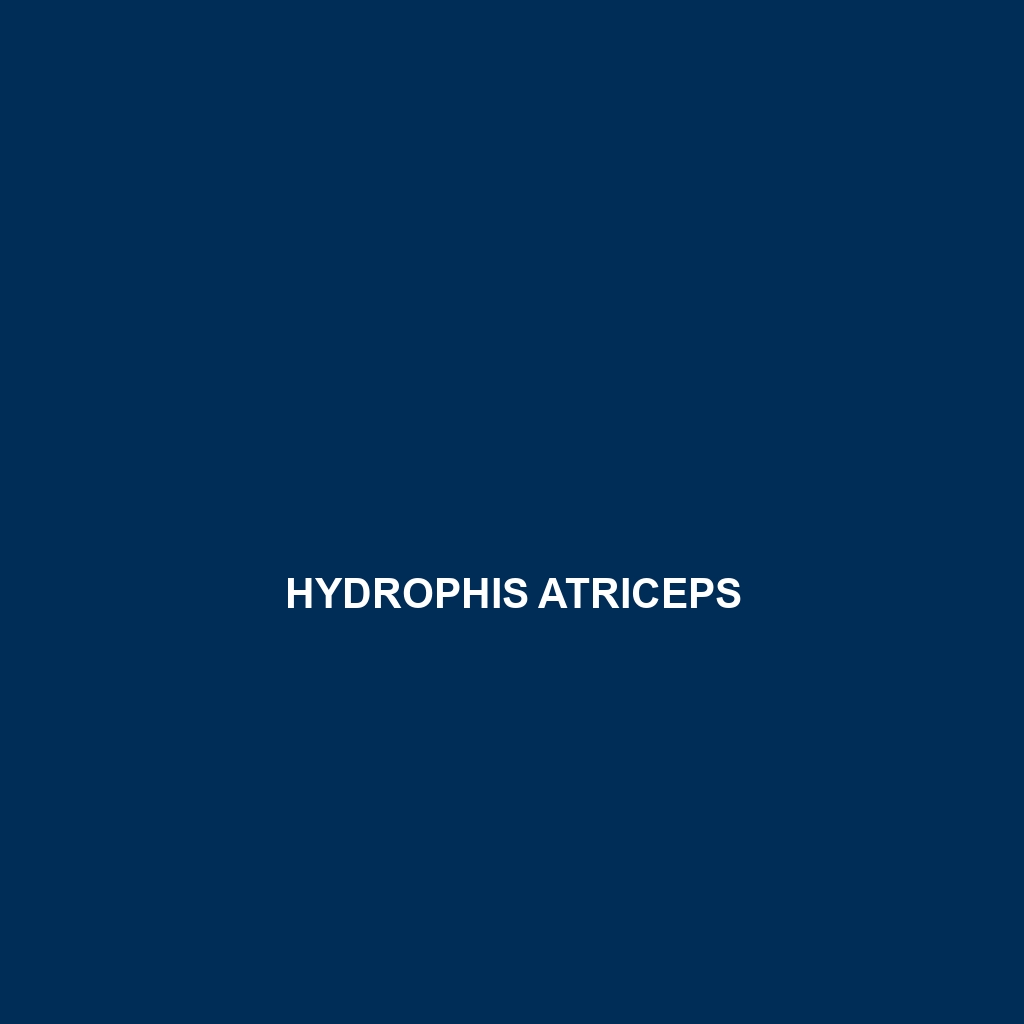Common Name
Hydrophis anomalus
Scientific Name
Hydrophis anomalus
Habitat
Hydrophis anomalus, commonly known as the anomalous sea snake, is primarily found in the warm, shallow waters of the Indian and Pacific Oceans. This species thrives in marine habitats, particularly coral reefs and coastal waters that are rich in biodiversity. In addition to coral reefs, Hydrophis anomalus is also associated with mangrove ecosystems and sandy bottoms, where it can hunt for prey. The geographic range extends from tropical areas of Southeast Asia to the northern coastlines of Australia. The subtropical climate and warm water temperatures serve as ideal conditions for the anomalous sea snake, allowing it to maintain high activity levels throughout the year.
Physical Characteristics
Hydrophis anomalus exhibits a distinctive appearance that sets it apart from other sea snake species. Adult individuals can reach lengths of about 1.2 to 1.5 meters (approximately 4 to 5 feet), featuring a slender, elongated body that aids in swift swimming. Its coloration is predominantly blue or gray with yellow or cream bands that decorate its body, providing effective camouflage against potential predators and while hunting for fish. One of the unique features of this species is its flattened tail, which acts as a powerful propeller, enabling agile movements in the water. Moreover, the highly specialized scales of Hydrophis anomalus help reduce drag, allowing it to glide seamlessly through its aquatic environment.
Behavior
The typical behaviors of Hydrophis anomalus are fascinating and contribute to its adaptability in marine habitats. This species is primarily diurnal, actively hunting during the day. It is often observed gliding gracefully through the water in search of fish and other prey. While usually solitary, these snakes may congregate in small groups during breeding seasons or when foraging in particularly abundant feeding areas. Mating rituals typically occur during the warmer months, where males engage in elaborate courtship displays to attract females. Interestingly, Hydrophis anomalus has been known to exhibit some nocturnal behaviors under specific circumstances, particularly when the opportunity for feeding arises.
Diet
Hydrophis anomalus is a carnivore, primarily preying on small fish and eels. Its feeding patterns are opportunistic, relying on acute vision and sensory organs to detect movement in the water. The diet is fortified by a preference for fish species abundant in its habitat, showcasing its role as a predator in the ecosystem. Additionally, this sea snake possesses venom that it uses to immobilize its prey, ensuring effective capture and feeding. The ability to hunt effectively within complex coral structures highlights the adaptability and specialized hunting strategies of Hydrophis anomalus.
Reproduction
The reproduction of Hydrophis anomalus is marked by a unique cycle typical to many sea snake species. Mating occurs in the warmer months, specifically from late spring to early summer. The gestation period lasts around 8 to 10 weeks, culminating in the birth of live young rather than egg-laying, which is characteristic of many terrestrial snakes. Females usually give birth to 4 to 8 offspring, which are miniature versions of adults and receive no parental care. This reproductive strategy ensures that the young snakes have a higher chance of survival, as they are born fully capable of swimming and hunting independently.
Conservation Status
The conservation status of Hydrophis anomalus is currently listed as ‘Least Concern’ according to the International Union for Conservation of Nature (IUCN). However, it faces potential threats from habitat degradation, pollution, and climate change, which could adversely affect its marine environments. Conservation efforts are critical to maintaining the ecological integrity of its habitats, and ongoing research will help monitor its population trends and health. Fishing practices that lead to bycatch also pose significant threats, underlining the need for improved fishing regulations and awareness programs.
Interesting Facts
One of the most intriguing aspects of Hydrophis anomalus is its unique adaptation to its aquatic life. Unlike terrestrial snakes, this species has evolved to possess specialized lungs that allow it to stay submerged for extended periods, often diving to depths of up to 200 meters (656 feet). Furthermore, while it is capable of consuming a variety of fish, its preference for certain prey has led to fascinating co-evolution dynamics within its ecosystem. The presence of Hydrophis anomalus in the marine food web signifies its importance as both predator and prey, illustrating the interconnected relationships that exist within its habitat.
Role in Ecosystem
Hydrophis anomalus plays a vital role in its ecosystem as a predator, helping regulate fish populations and contributing to the overall health of coral reef ecosystems. By controlling the numbers of smaller fish species, it helps maintain a balanced food web, which is crucial for the survival of various marine organisms. Additionally, as a prey species for larger marine predators, Hydrophis anomalus serves as an important part of the marine food chain. Its acute sensitivity to environmental changes also positions it as an indicator species, making its presence reflective of the overall health of its marine habitat.
